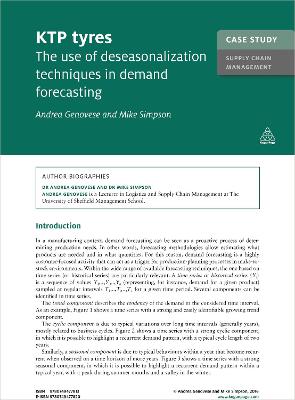In a manufacturing context, demand forecasting can be seen as a proactive process of determining production needs. In other words, forecasting methodologies allow estimating what products are needed and in what quantities.
This case study shows how demand forecasting is a highly customer-focused activity that can act as a trigger for production planning processes in make-to-stock environments. This study looks at the example of KTP, a company operating in the tyres industry. The company mainly manufactures tyres for agricultural machines (such as tractors and other types of equipment), with a special focus on tyres for vineyard tractors. The company is not expecting major changes in the business climate and in industry operations in the short term.
Aimed at students on operations management courses, the case demonstrates how in the presence of random, cyclical and seasonal components, the trend element in this forecasting may become less apparent. It looks at the necessity to remove components whose origin may be traced back to a known and predictable pattern (such as seasonal or cyclical). The case presents the use of deseasonalisation techniques - it looks in depth at an application of these techniques and an interpretation of the results they provide.
Mike Simpson and Andrea Genovese show readers how a company can determine a reliable forecast for its overall demand for the next year given the impact of seasonal phenomena on its sales.
- ISBN10 0749477814
- ISBN13 9780749477813
- Publish Date 3 January 2016
- Publish Status Cancelled
- Publish Country GB
- Imprint Kogan Page Ltd
- Format Paperback (US Trade)
- Pages 11
- Language English
